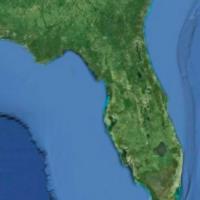Meddelanden: 4
Språk: English
zoho (Visa profilen) 25 januari 2014 19:53:30
While reviewing the Baza Radikaro Oficiala found here [1] I encountered some puzzling differences between it and the Reta Vortaro found here [2]. Hopefully someone can help me understand.
I am making 2 assumptions - either of which may be wrong. First I assumed that words in the BRO which consist of only a root and word ending (ie not including words like komun/umo, or el/doni etc), would be sorted into their root class (ie if the root of a word was an o-root it would appear in the substantivoj section). Second, I assumed that for definitions in the Reta Vortaro, the first entry on the page - on the line by itself without a definition - shows the the root class of the word.
For example when looking up daŭro the first entry in the Reta Vortaro is daŭr/i but it appears in BRO group 4 as daŭro. The entry in the BRO helpfully contains a footnote but it indicates that daŭri is a derivation of daŭro. The text states "Daŭro, tempo, dum kiu io ekzistas. Derivaĵo: daŭri = manifestiĝi per daŭro, t.e. havi daŭron, esti daŭra (esti posedanta daŭron)."
When words are included twice (resto and resti, interesto and interesti etc) the entries contain a footnote but doesn't include a explanation as to what root class the root belongs to. In those cases I the Reta Vortaro shows them as verbs (rest/i and interes/i).
When I looked up ofta (BRO group 2) in the Reta Vortaro it is defined as oft/e. I thought that there weren't any e-root words ... When I looked up taŭga (BRO group 6) it is defined as taŭg/i.
So my questions is
1. Does the first word printed on the definition page of said word on Reta Vortaro show the root-class?
2. If so, how do I resolve the differences between the class used in the BRO and the result from Reta Vortaro
3. Is there somewhere else I should be looking to determine root class?
Dankon!
[1] http://www.akademio-de-esperanto.org/aktoj/aktoj2/...
[2] http://www.reta-vortaro.de/revo/
michaleo (Visa profilen) 25 januari 2014 22:03:57
zoho:Saluton!The classification of word roots is a controversial issue. Sometimes there is no agreement into which category a root should be categorized. Besides, some people do not even agree that any root categories exist.
While reviewing the Baza Radikaro Oficiala found here [1] I encountered some puzzling differences between it and the Reta Vortaro found here [2]. Hopefully someone can help me understand.
I am making 2 assumptions - either of which may be wrong. First I assumed that words in the BRO which consist of only a root and word ending (ie not including words like komun/umo, or el/doni etc), would be sorted into their root class (ie if the root of a word was an o-root it would appear in the substantivoj section). Second, I assumed that for definitions in the Reta Vortaro, the first entry on the page - on the line by itself without a definition - shows the the root class of the word.
For example when looking up daŭro the first entry in the Reta Vortaro is daŭr/i but it appears in BRO group 4 as daŭro. The entry in the BRO helpfully contains a footnote but it indicates that daŭri is a derivation of daŭro. The text states "Daŭro, tempo, dum kiu io ekzistas. Derivaĵo: daŭri = manifestiĝi per daŭro, t.e. havi daŭron, esti daŭra (esti posedanta daŭron)."
When words are included twice (resto and resti, interesto and interesti etc) the entries contain a footnote but doesn't include a explanation as to what root class the root belongs to. In those cases I the Reta Vortaro shows them as verbs (rest/i and interes/i).
When I looked up ofta (BRO group 2) in the Reta Vortaro it is defined as oft/e. I thought that there weren't any e-root words ... When I looked up taŭga (BRO group 6) it is defined as taŭg/i.
So my questions is
1. Does the first word printed on the definition page of said word on Reta Vortaro show the root-class?
2. If so, how do I resolve the differences between the class used in the BRO and the result from Reta Vortaro
3. Is there somewhere else I should be looking to determine root class?
Dankon!
[1] http://www.akademio-de-esperanto.org/aktoj/aktoj2/...
[2] http://www.reta-vortaro.de/revo/
PS
Wim Jansen in his article proposes the new calssification (flexible one/two-categorial).
Rikat (Visa profilen) 25 januari 2014 22:20:57
Bazformoj de radikoj en vortaroj
Bertilo Wennergren
Esperantologio / Esperanto Studies
4 (2009), 7-22
available online
This is an interesting topic to me. I wonder if word derivation would be a little more predictable if every radical were assigned a definite category when it was created.
lagtendisto (Visa profilen) 26 januari 2014 13:07:51
michaleo:The classification of word roots is a controversial issue. Sometimes there is no agreement into which category a root should be categorized.Root words capture facts of the reality around. Similar assets inside databases also have to be organized for further retrieval requests. So mostly that assets will be organized according Relational model. Reason why that is not every data can be put into only one hierachic category.
Inside linguistic thesaurus management there are used cross references i.e. KWIC markers to overcome limits of hierarchical data organisation. Interesting, I have to find out if there excists Esperanto language database which is listed inside commercial Hoppenstedt database pool.

